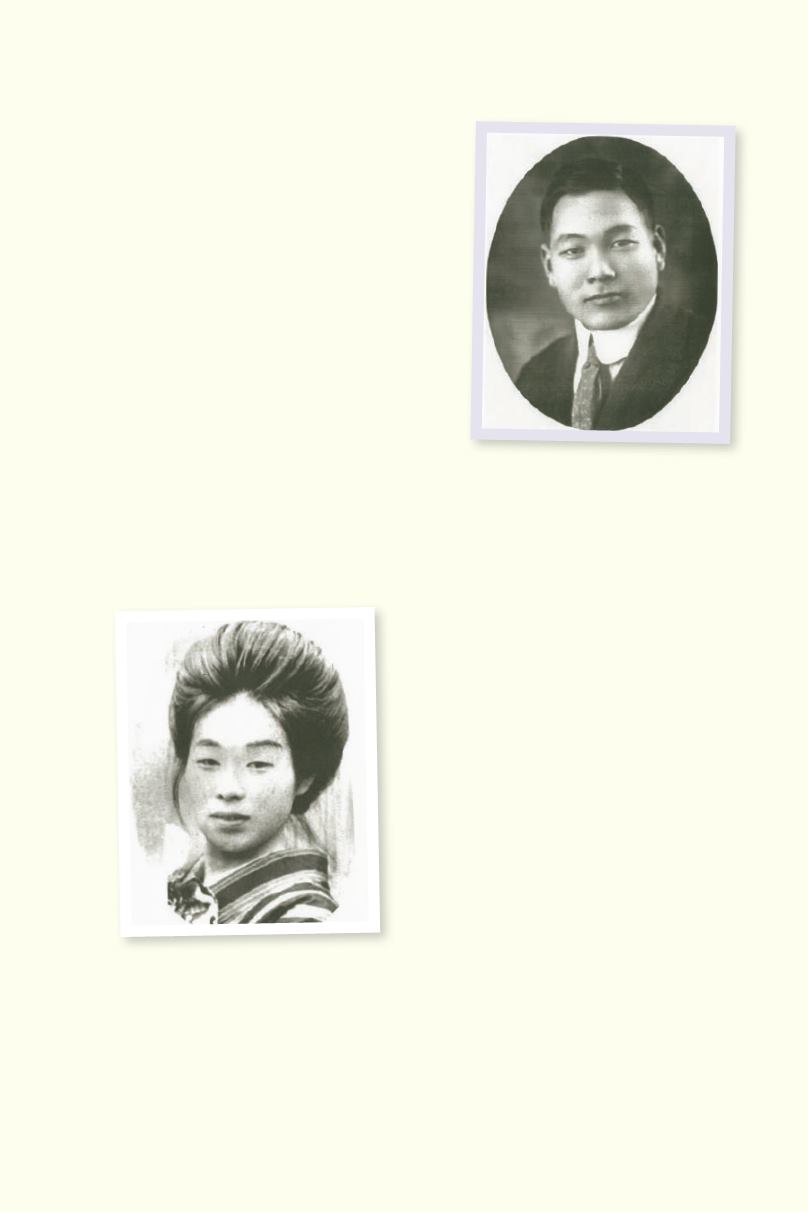
hospital each morning dressed in a crisp
white apron, returning each night with
wrinkles in her clothing and satisfaction
on her face. She ate alone at the inn’s
dining room, unusual for a Japanese
woman at the time.
Shinji greatly admired Tomomi’s
independence and confidence, so much
like that of American women. He
decided Tomomi was the woman he
wanted for his wife. So he asked friends
to tell the family of his intended future
wife that he would not be coming to
meet her after all. Shinji’s friends agreed
Tomomi would be a good wife and acted
as matchmakers. Tomomi consented to
marrying Shinji. She had heard good
things about the United States, and
she was ready for new adventures.
Shinji had to leave Japan within a
month, or he would be inducted into
the Japanese army. After a quick
wedding, Tomomi and Shinji Sato
took a steamship from Tokyo back
to San Francisco to start their new
life together.
This formal portrait of Kiyo’s father, Shinji
Sato, was taken in Japan in 1922, the
year he traveled from California to Tokyo
to marry.
This photo of Kiyo’s mother, Tomomi
Watanabe, was taken in 1922. It is typical
of Japanese pre-wedding portraits of
the time.
The couple returned to the Napa
Valley peach orchard. Life there was
very different from life in Tokyo.
Tomomi learned to pick and sort
and pack peaches. She adapted to
living in a small hut and to using an
13
An Ordinary Family


